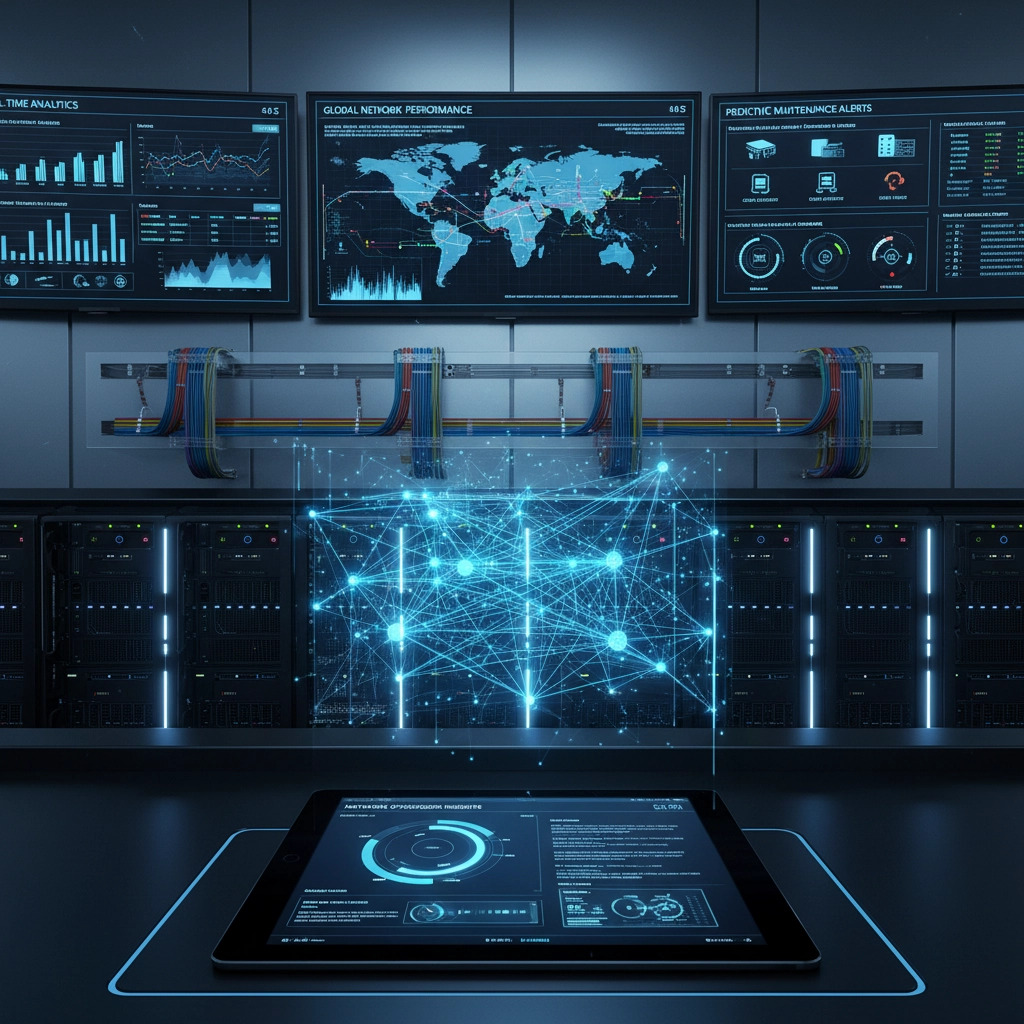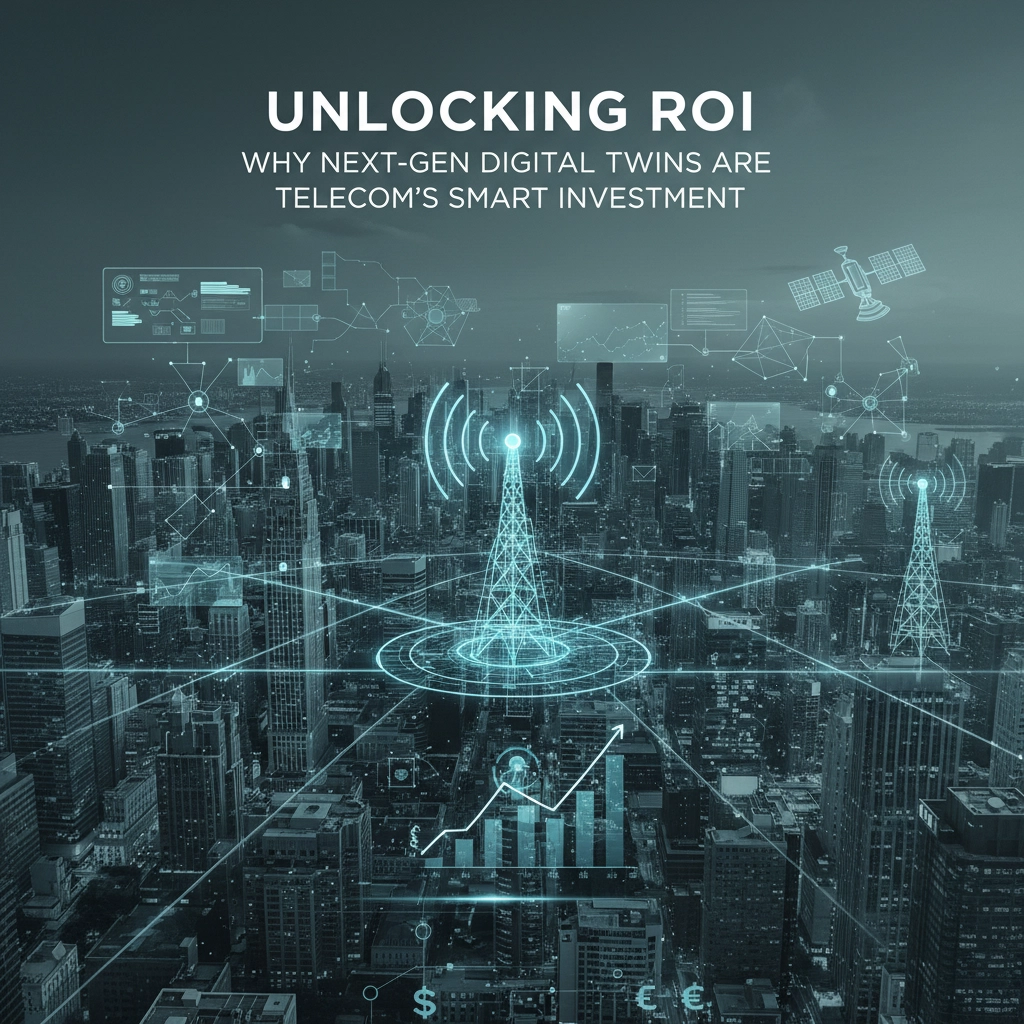The telecommunications landscape is experiencing unprecedented transformation. Network complexity has reached new heights with 5G rollouts, edge computing demands, and the push toward 6G innovation. Traditional reactive approaches to network management are no longer sustainable: they're too costly, too slow, and too risky for today's competitive market.
Enter digital twins: virtual replicas that mirror physical network infrastructure in real-time, powered by AI and advanced analytics. These aren't just monitoring tools: they're strategic assets that fundamentally change how telecom operators approach investment decisions, operational efficiency, and revenue generation.
The numbers speak for themselves. Early adopters are reporting remarkable returns, with 87% achieving ROI within just one year of deployment for private wireless applications. This isn't future potential: it's present reality for operators bold enough to embrace next-generation digital twin technology.
The Financial Case for Digital Twins
Digital twins deliver ROI through three primary channels: cost reduction, revenue acceleration, and risk mitigation. Unlike traditional network management solutions that address single pain points, digital twins create a foundation for transformation across the entire operational spectrum.
The investment thesis is compelling because digital twins address telecom's most expensive challenges simultaneously. Network downtime costs operators millions per hour. Manual network optimization requires specialized teams working around the clock. Failed deployments waste months of planning and substantial capital investment.

Digital twins eliminate these inefficiencies by creating a virtual testing and optimization environment where operators can simulate, validate, and optimize before implementing changes in production networks. This shift from reactive to predictive operations creates immediate cost savings while building the foundation for future revenue opportunities.
Operational Excellence Through Real-Time Intelligence
Predictive maintenance represents the most immediate ROI opportunity. Traditional maintenance strategies rely on scheduled interventions or emergency responses to equipment failures. Digital twins flip this model by analyzing real-time performance data to identify potential issues weeks or months before they impact service.
The financial impact is substantial. Unplanned network outages cost telecom operators an average of $5.6 million per incident when considering lost revenue, customer churn, and emergency response costs. Digital twins reduce these occurrences by up to 40% by enabling proactive interventions based on predictive analytics.
Network optimization delivers continuous value creation. Digital twins provide granular visibility into network performance, automatically identifying congestion points, inefficient routing patterns, and underutilized resources. This real-time optimization capability eliminates the need for costly manual network tuning while improving overall network efficiency.
Consider 5G deployment scenarios where digital twins simulate various antenna configurations, power settings, and frequency allocations before physical installation. This virtual validation reduces deployment errors by 60% and accelerates time-to-market by weeks, directly impacting both capital efficiency and revenue realization timelines.
Revenue Diversification and New Business Models
Digital twins unlock entirely new monetization pathways that were previously impossible with traditional network management approaches. Dynamic network slicing represents the most lucrative opportunity, enabling operators to create dedicated virtual networks with guaranteed performance characteristics for enterprise customers.

Service innovation accelerates through risk-free testing environments. Operators can model new service offerings, test pricing strategies, and validate market demand before committing substantial resources to full-scale deployments. This capability reduces time-to-market for new services while minimizing investment risk.
IP digital twins serve as engines for innovation across the telecom value chain. Communication service providers can develop ultra-reliable low-latency applications for streaming, gaming, and enterprise IoT while simultaneously optimizing pricing models for maximum profitability.
Usage-based pricing models become practical with the granular visibility that digital twins provide. Operators can offer personalized service tiers, bandwidth guarantees, and latency commitments backed by real-time performance data. This shift from flat-rate to value-based pricing typically increases average revenue per user by 15-25% within the first year of implementation.
Risk Reduction and Strategic Agility
Deployment risk mitigation provides substantial value, particularly during complex 5G rollouts where configuration errors can result in millions of dollars in lost investment. Digital twins enable comprehensive testing of network configurations, equipment settings, and integration scenarios before physical deployment.
This virtual validation capability becomes increasingly critical as network complexity grows. Modern 5G deployments involve intricate interactions between radio access networks, core infrastructure, and edge computing resources. Digital twins model these relationships accurately, identifying potential conflicts or performance bottlenecks before they impact live networks.

Strategic decision-making improves dramatically when operators have access to comprehensive, real-time network intelligence. Digital twins integrate data across network performance, customer behavior, and operational metrics, enabling data-driven investment decisions that were previously impossible with siloed information systems.
The agility advantage cannot be overstated. Operators using digital twins can respond to market changes, customer demands, and competitive pressures in days rather than months. This responsiveness translates directly into competitive advantage and revenue protection in rapidly evolving markets.
Customer Experience as a Revenue Driver
Proactive service management transforms customer relationships from reactive problem-solving to predictive value delivery. Digital twins identify potential service degradations before customers experience issues, enabling proactive resolutions that significantly boost satisfaction scores and reduce churn rates.
The financial impact of improved customer experience is substantial. Telecommunications companies typically spend 5-10 times more acquiring new customers than retaining existing ones. Digital twins reduce churn rates by 20-30% through superior service quality and proactive customer communication.
Personalization capabilities enable targeted service offerings based on detailed usage patterns and performance analytics. Digital twins support Customer 360 initiatives by providing comprehensive visibility into customer behavior, network usage patterns, and service preferences.
This granular customer intelligence enables hyper-personalized marketing campaigns with conversion rates 3-5 times higher than traditional mass-market approaches. Operators can identify high-value customers, predict service needs, and proactively offer relevant upgrades or premium services.
Measurable Returns in Practice
Real-world implementations demonstrate consistent ROI achievement. Major carriers including Vodafone, AT&T, and Deutsche Telekom have deployed digital twin technology to enhance network performance, accelerate 5G deployment, and optimize smart city solutions. These implementations consistently report positive ROI within 12-18 months.

Specific benefits include:
- 40% reduction in thermal energy consumption through optimized equipment operation
- 60% decrease in unplanned downtime through predictive maintenance
- 25% improvement in network capacity utilization through AI-powered optimization
- 30% faster deployment timelines for new services and infrastructure
The compound effect of these improvements creates sustainable competitive advantage. Operators with digital twin capabilities can offer superior service quality, respond faster to market opportunities, and operate more efficiently than competitors relying on traditional network management approaches.
Investment payback periods typically range from 8-18 months depending on deployment scope and operator size. Larger operators with complex networks see faster payback due to greater efficiency gains, while smaller operators benefit from reduced operational complexity and improved service quality.
Building Tomorrow's Competitive Advantage
Digital twins represent more than operational improvements: they're strategic enablers for the next generation of telecommunications services. As the industry evolves toward 6G, autonomous networks, and ubiquitous connectivity, operators need the agility and intelligence that only digital twin technology can provide.
The ROI case for digital twins strengthens over time as operators discover new applications, optimize existing processes, and develop innovative service offerings. Early adopters are building sustainable competitive advantages while establishing the technical foundation for future innovation.
The transformation is already underway. Forward-thinking operators are implementing digital twin solutions today to capture immediate efficiency gains while positioning for tomorrow's opportunities. The question isn't whether digital twins deliver ROI: it's whether your organization can afford to delay this strategic investment.
